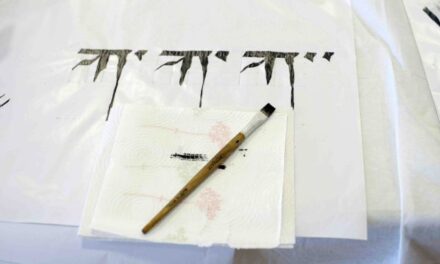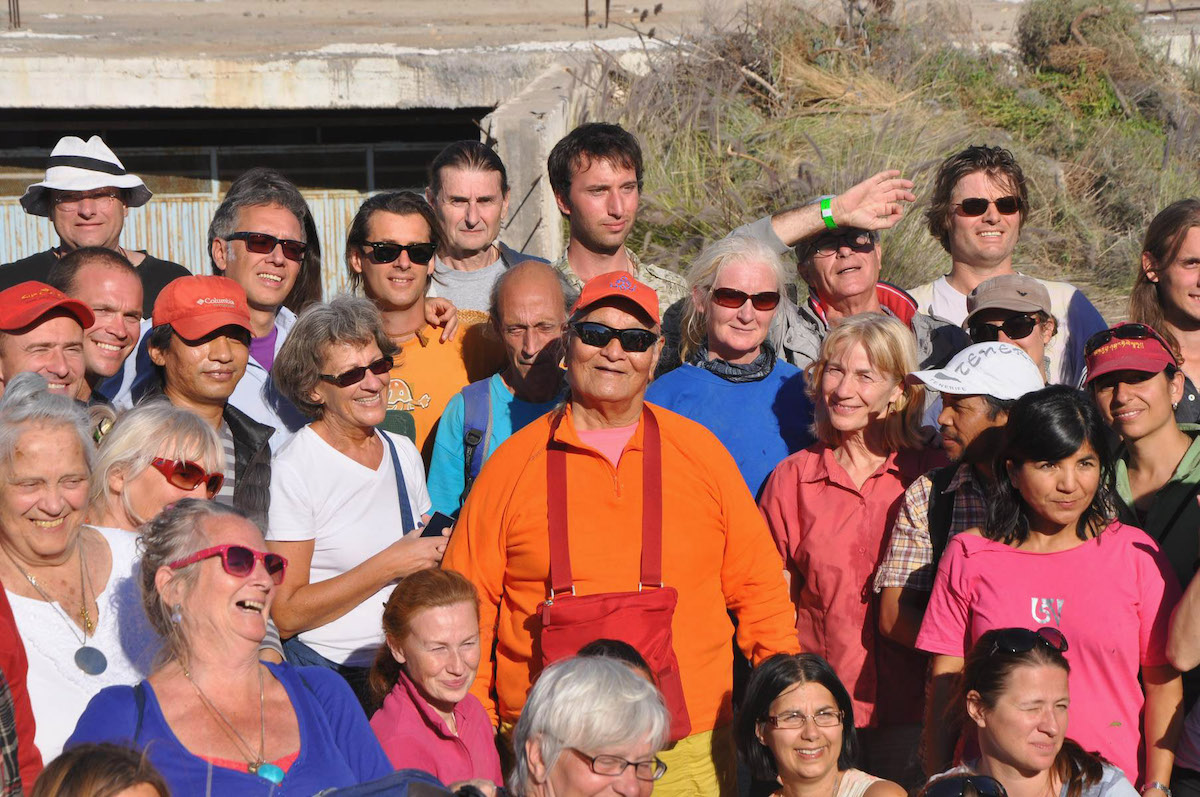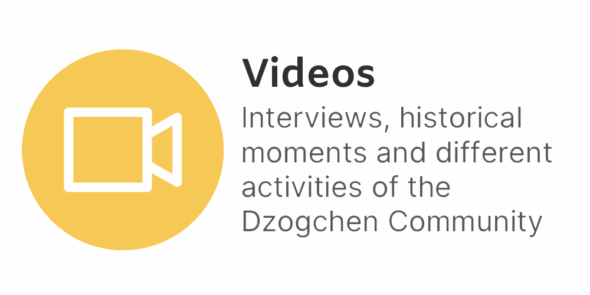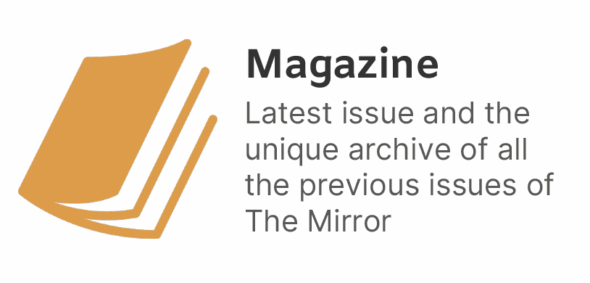Andy Lukianowicz
I first became interested in Zen Buddhism in my teens, and attended the Buddhist Society meditation group led by the strong meditator Basil Sladen [his exhortation to us on starting our meditation: ‘Buddha Mind!’], and then went to India to experience the presence of the Dalai Lama [ironically I met him and presented a kata shortly after returning to England, when he visited Snellgrove’s students at SOAS!], then in 1974 followed a summer teaching course given by Chogyam Trungpa Rinpoche at his recently founded Naropa Institute in USA. He was formidable, always drunk, always crystal clear, always unpredictable.
A couple of years later I went to live at Sogyal Rinpoche’s Dharma Centre Orgyen Cho Ling [now Rigpa] in London, where having previously received teachings, instructions and initiations from the great Nyingmapa master Dudjom Rinpoche on the Dudjom Tersar nondro I completed the practices and proceeded to receive initiations on inner tantric deity practices. It was he who first pointed out to me and enabled me to glimpse, experience and know my natural mind.

Then I met Chögyal Namkhai Norbu Rinpoche, at Easter 1979; I was especially also intrigued to hear Dharma teachings in Italian, my mother tongue. It was my great good fortune that when Rinpoche returned to London a second time to impart further teachings at Christmas that his translator, the mighty Barrie Simmons, was busy working in the USA so I was asked by Judy Allan if I felt able to translate; when I went to Jill Purce’s home for Rinpoche’s approval, somehow he did not hesitate to agree and throughout the retreat was very encouraging, so I spent the next 10 days translating for him – which I continued to do for over thirty years, both written and oral/aural teachings. However it was the latter, due to the awakened alertness and flexibity needed to translate Rinpoche in ‘real time’, in the situation, that helped me more in my practice of present moment awareness.
That Christmas retreat my work entailed also translating interviews, at meals and so on, so I was by his side up to ten hours most days. One thing that struck me straight away was the way he interacted differently and individually with each person; in the interviews, one person he might tell to do more sitting practice, the next, not to push herself so hard. Also at meals he recounted to me many important incidents in his life, perhaps the most memorable being the attempt to poison him in his teens when he attended a teaching by Jamyang Khyentse Chokyi Lodro at Dzongsar Monastery in Derge.
Meeting Rinpoche turned my whole life around. The next year I moved to Italy, to follow his Dzogchen teachings closely, more assiduously, that he imparted so freely, clearly and extensively. I remember that, on visiting Rinpoche, after his retreat at Monte Belluna in north-east Italy, at his family home in Formia, he took me and my vajra brother the great poet John Shane to the top of the nearby Monte Redentore [Mount Redeemer], where he left us, with tents, food and practices to do, with a laconic appointment to come and collect us after three weeks. A fruitful retreat, a sort of freeform rushen, looking back.
By the end of that year I was living in Naples, at a flat occupied by some of his closest students, Andrea Dell’Angelo and Fabio Andrico among others, with Lotsawa Adriano Clemente usually there as well as other Neapolitan students, and where Rinpoche too slept when he came down to Naples for his job at the Orientale University. I even actually got a job working in the English department at the same University.
[If I may tell a personal story, in my second year I was held up at gunpoint by some youths, and it was a mature student of mine who, driving past saw me, probably immediately grokked what was going on, pulled over, opened wide the passenger door and shouted out: “Professo’, le serve un passaggio?” – “Prof, do you need a lift?” I slipped between them, they were as surprised as I was at the turn in events, and off we sped! As well as riding a lion Dorje Legpa also drives a car through the crazy streets of Naples! To my mind, Naples, that one wag humorously defined as the only world city without a European quarter, is the only city in the west [in the world?] that could accommodate Rinpoche’s originality, spontaneity and big-heartedness.]
Rather than try to recount Rinpoche’s teachings, which other better prepared students can do much better and more clearly, I would like to share some of my memories of those years, some amusing, some striking, that showed me time and again how he was at once the most remarkable, most ordinary, person I have ever met.
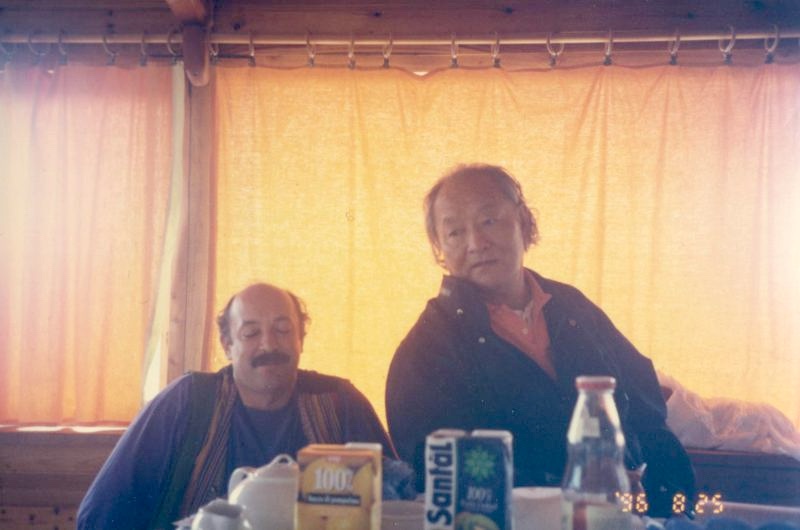
A few easy-going reminiscences of Rinpoche. One morning in Naples, walking together to work we stopped at a bar, I presumed for a coffee, instead Rinpoche offered me an ice cold beer, his own chosen remedy for the flu that I was just starting! Three times, he told me things about myself that I had never told to anyone, with words of advice on how to deal with certain problems. Another time, in England, he conjured the spirit of a recently deceased British disciple, her presence palpably felt by myself and many of the others there. Once he showed me a necklace of relics he wore around his neck, proudly rubbing his most prized amulet: a bone from one of a pair of brothers who had killed each other in a feud, muttering how its energy was very powerful.
Once in Moscow in a museum full of marvellous artistic and religious artefacts, he led me to the room that impressed him most: a smaller collection, full of crystals. Once I brought him a table beer mat from Germany depicting a blonde Teutonic Valkyrie goddess holding up a foaming glass of beer, seated in front of the rising sun, saying for me she was the German local version of Ozer Chenma, he could not stop laughing; looking back as I walked way, he was still looking at it laughing. By the way, this reminds me when young Rinpoche’s children, Yeshi and Yuchen, had two pet goldfish, he told me their names: ‘Leg’ and ‘Pa’, bursting out laughing. I also remember that I had the opportunity to translate, at his first teaching, at Merigar, Yeshi Namkhai, at a retreat Christmas 1990 [Chögyal Rinpoche was abroad at the time]; also teaching were Alak Zenkar Rinpoche and Tenzin Wangyal Rinpoche.
This is a good place to mention that it was also in Naples [through Antonio Ferrara, a Dzogchenpa vajra-brother] that I met my most important ‘non-Dharma non-Tibetan’ guru, Claudio Naranjo, a shaman disguised as a [Perls-taught] gestalt therapist, a student of Tarthang Tulku, of Oscar Ichazo [the founder of protoanalysis and Arica], and of Sufi teacher, story-teller and trickster Idries Shah, a close friend of Carlos Castaneda and Alan Watts and of Chogyam Trungpa. In his shock-point gestalt group workshops in late-80s Naples I learned not to trust but instead work with my conceptual mind, to break down the false self-image it constructed by its insecurities and repressions [a good friend but a lousy master, to quote Baba Ram Dass] and how to trust instead our basic emotions, which he praised as our true inner self, our inner animal, and how to treat instead the beguiling wiles of the discursive mind as a travel companion on the path to freedom, to learn how to use natural energy rather than condemn or repress it. This I learned to do faster and more skilfully by combining the insights garnered from his group-work with insights from my more ‘traditional’ practice [if any practice once understood continues to be tradition-bound]. In fact he taught and conducted as an essential part of the group work in his Seekers after Truth program, integrating this path to self-knowledge with his Self-Analysis for the Seeker shattari methods, a series of interpersonal meditations, progressive Theravada, Zen Mahayana and tantric meditations culminating in Guru Rinpoche practice, which he later systematised as Dionysian Buddhism. What did he identify as our greatest trap? To want not to know, to fear and resist change, to abide in spiritual indolence, social compliance, and interpersonal indifference, in a word, striving to remain in samsara, ‘the devil you know…’ His teaching summed up as a Zen koan/one-liner? “To be AND not to be, that is the answer.”

It was at Merigar – where I had the honour to translate for the Dalai Lama when he came to inaugurate the gönpa – that I also met my two main Bonpo masters, first Tenzin Wangyal Rinpoche in 1987, and two years later, the great Bonpo master, the recently deceased Yongdzin Lopon Tenzin Namdak, whose teachings too I have followed assiduously, having had the good fortune to serve as his Italian translator for twenty years, and to have been treated by him like a close student and close friend during that time.
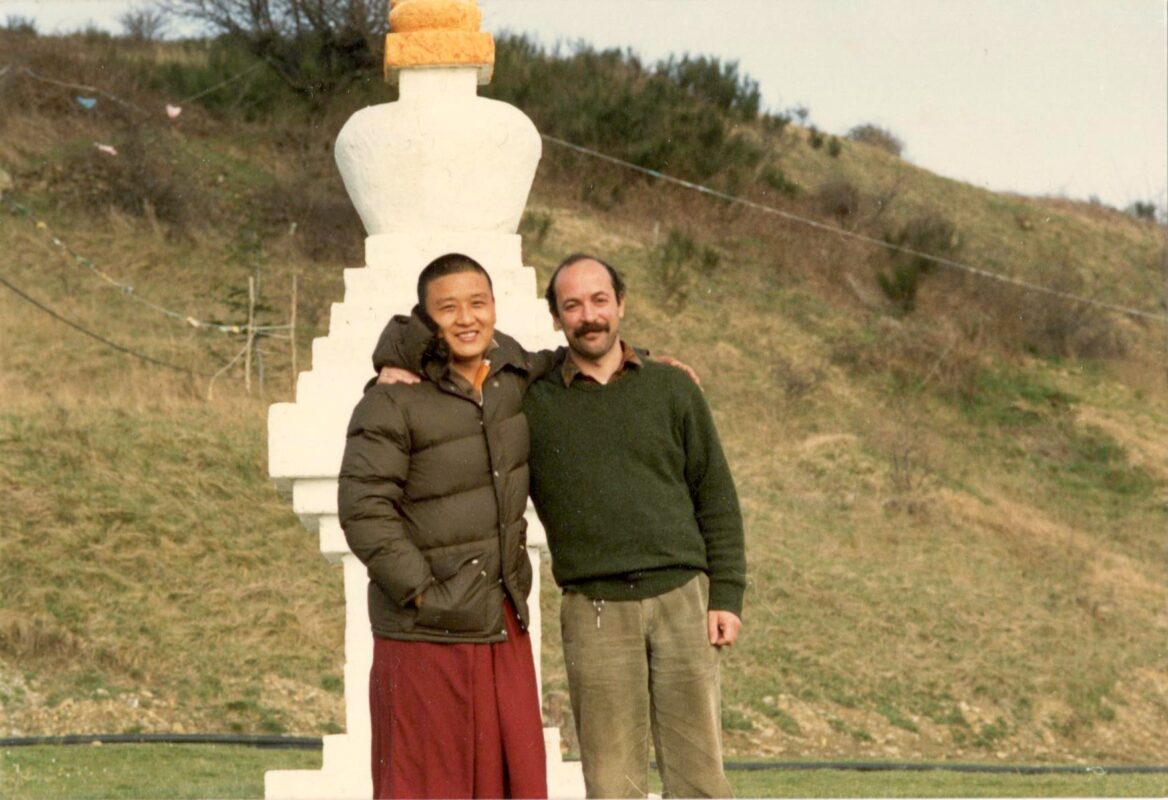
Fortunately I had no difficulty following these two great teachers, or rather two Buddhas, Chögyal and Lopon, attending their teachings and talking with them in private and in public, although some of their ‘students’ wanted me to choose one between them, like some kind of loyalty test! On the contrary, they always asked, sometimes with concern but always with great affection, news of each other’s health and general conditions. I remember, when the building of the Merigar gönpa was being finalised, Chögyal Rinpoche took me and Giorgio Dallorto to the centre of the gönpa and when we looked upwards he told me he saw there an image of Guru Padmasambhava, whether a material statue or a visible presence he did not specify; in parallel, whenever Lopon Rinpoche greeted me on arrival he used to welcome me as a devotee of Guru Rinpoche. [Once, in a period when I was spending much time reciting the Japanese Amida nembutsu, the mantra of Amitabha Buddha, Lopon smiled at me and recited Namo Amitofo, the Chinese 6-syllable invocation of Amitabha].
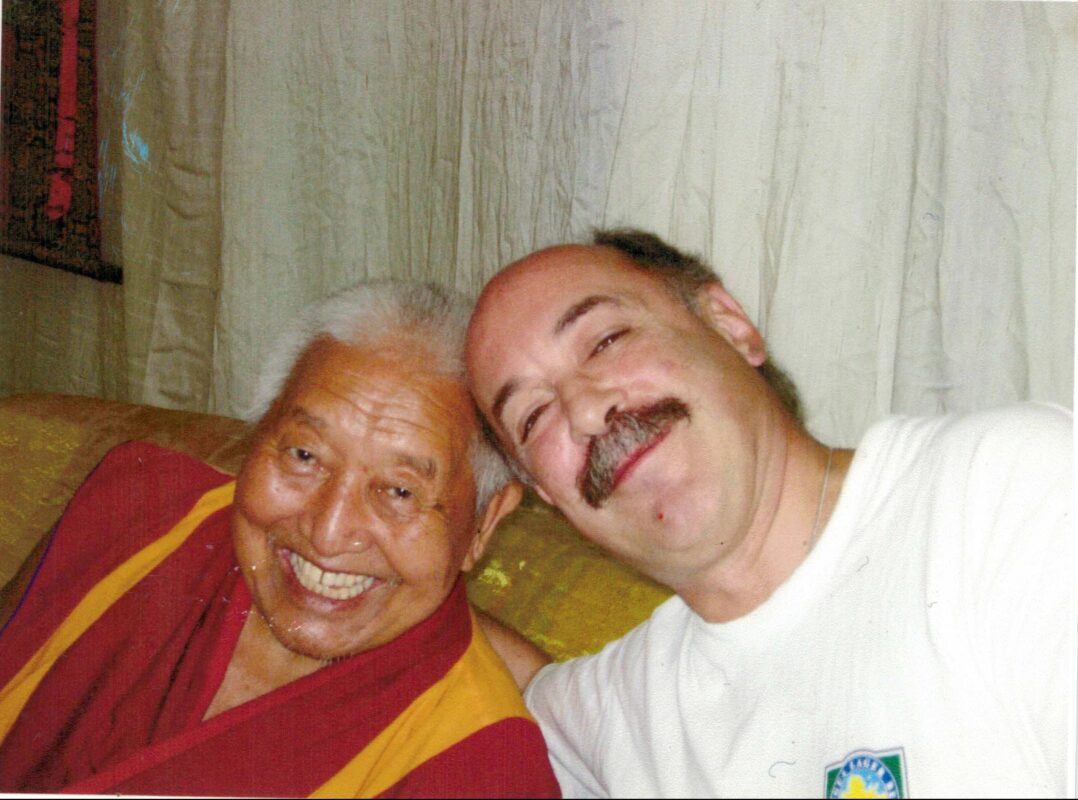
In line with Dorje Legpa’s invocation where he affords equal protection to Buddhists and Bonpos [Ban Bon], I love the account, which I heard from Louise Lands-Levi, of Chögyal Rinpoche’s response when confronted at a meeting of Tibetan teachers convened in Switzerland by the office of the Dalai Lama, at the time when he was doing much research and publishing his writing about Bon, then not yet deemed respectable, and being abruptly asked: ‘Are you a Buddhist or a Bonpo?’ he simply pointed at his lapel name badge and said: ‘I am Namkhai Norbu’.. Priceless!
In the 90s, I participated in Chögyal Rinpoche’s Santi Maha Sangha courses, aimed to firmly establish knowledge of the view alongside rigourous but joyful practice, translating his voice during the teachings and the course books from Adriano Clemente’s Italian translation. [I also translated Rinpoche’s seminal book on Bon and Tibetan culture, Drung, Deu, Bon, published by LTWA in Dharmsala, India]. Thankfully, it was also through my activity as translator that I was called to translate for Dakini Tsering Paldron, Khandro Rinpoche, at her teachings in north Italy, forming a guru-disciple relationship now in its thirtieth year. From her, I have learned the value of combining precision in scholarship with soaring mystical vision, and through her reality as a reincarnation of Yeshe Tsogyal while at her side at a Padmasambhava initiation was granted a vision of Guru Rinpoche himself, for which I am ever grateful to her.
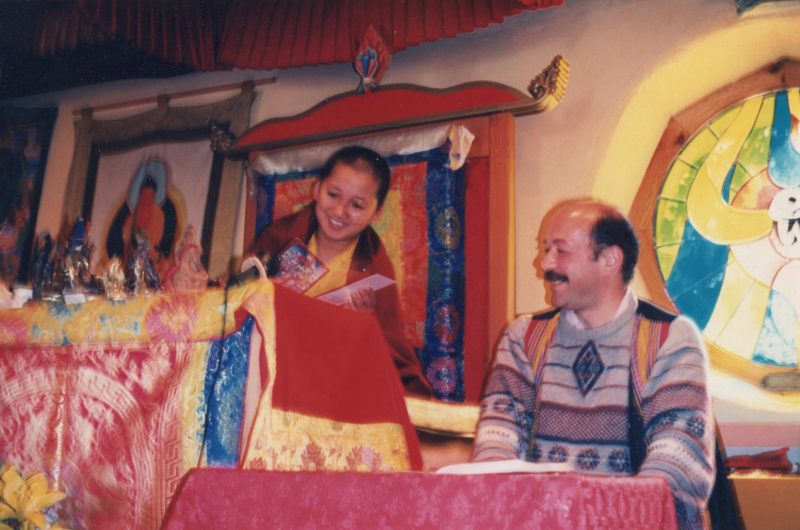
I also recall, when I get too full of myself, a personal and direct transmission from Chögyal Rinpoche that I received in Kathmandu, when I was translating for him at a teaching at the Vajra Hotel. At a group meal on ending the retreat, someone saw there was a free seat at Rinpoche’s table and told me I should go and sit there; radiating over-weening vanity, I of course followed her advice. As I sat down Rinpoche looked over at me, then averted his gaze saying nothing, in fact he did not look at me or speak to me again throughout the whole meal. Mind transmission, symbolic transmission, word transmission? Rinpoche gave me the fourth, silent transmission, loud and clear. And I got that transmission too, loud and clear. As he used to sign his emails: ciao ciao!
To conclude in the present moment, a world foreboding a living nightmare for the next generation, who have nothing to thank us for [Susan Bauer Wu’s A Future We Can Love is a beacon of hope in these dark times], now that Chögyal Rinpoche and Lopon Rinpoche as well as Dudjom Rinpoche are in Sukhavati [the name does not matter, you get my point] I know by experience that we all can count on both of them, as well as on Guru Rinpoche and on Drenpa Namkha, for guidance, help and protection as we travel our path. As Chögyal Rinpoche said, freed of the material body masters are nine times more powerful to continue their dharma activities for their students and for all sentient beings. We followers of these great masters are all very fortunate indeed, let us share this fortune with all, especially the younger generation, who need and deserve it the most.
Featured photo: Andy listens attentively to translate as Rinpoche makes an important point, Merigar 1985.


